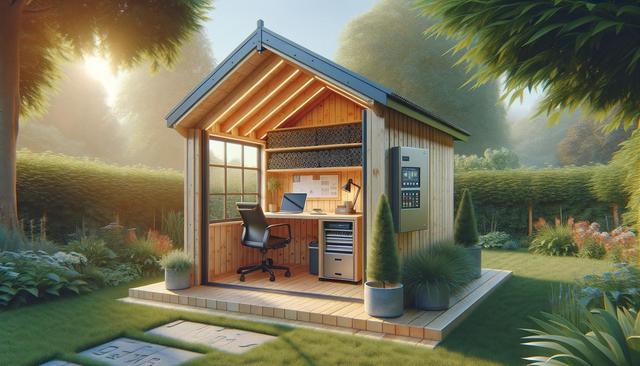
Creating a Comfortable and Functional Insulated Garden Office with Electrics
Why Choose an Insulated Garden Office?
As remote work becomes more common, many homeowners are reimagining outdoor spaces to serve as productive environments. An insulated garden office is a smart investment for those looking to separate work and home life without a long commute. Unlike traditional outdoor sheds, a garden office is designed with comfort and functionality in mind. Insulation plays a crucial role here, helping to regulate temperature and reduce noise, making the space usable year-round. With proper insulation, you can comfortably work through summer heatwaves and winter chills without relying heavily on heating or cooling systems.
Additionally, the presence of electrics elevates a garden office from a simple shelter to a fully functioning workspace. With power outlets, lighting, and heating, you can use electronic devices, install Wi-Fi, and even integrate smart home features. This makes it ideal for not only working but also for hobbies, studying, or setting up a creative studio.
Materials and Insulation Options
Choosing the right materials for your insulated garden office is essential for long-term comfort and durability. Most garden offices are constructed with timber frames and clad in weather-resistant materials such as treated wood or composite panels. The insulation itself can take several forms, each with its own advantages:
- Rigid foam boards – offer high thermal resistance and are easy to install
- Mineral wool – provides excellent soundproofing and fire resistance
- Spray foam – seals gaps effectively and offers a high R-value
Walls, floors, and ceilings should all be insulated to create a consistent and energy-efficient environment. Double-glazed windows also contribute to insulation and help reduce external noise. When selecting materials, consider their environmental impact, maintenance requirements, and how they align with your design preferences.
Electrical Setup and Safety
Installing electrics in your garden office must be done carefully and in compliance with local building codes. This typically involves running an armored cable from your house to the office, which should be buried underground for safety. It’s important to work with a certified electrician to ensure the setup is safe and meets all regulations.
Your electrical system can include:
- Lighting – recessed ceiling lights, desk lamps, or wall-mounted options
- Power outlets – strategically placed for computers, printers, and other devices
- Heating and cooling – electric radiators, underfloor heating, or air conditioning units
- Internet access – either via wired Ethernet or a strong Wi-Fi signal repeater
Smart features such as motion sensors or remote-controlled lighting can further enhance convenience, especially if you’re using the space during early mornings or late evenings.
Design and Layout Considerations
Designing your insulated garden office requires thoughtful planning to make the most of the available space. Start by identifying your primary use case—whether it’s for professional work, creative pursuits, or simply a quiet retreat. This will influence the layout, furniture, and lighting choices.
Key considerations include:
- Furniture – ergonomic desks and chairs suited to long hours of use
- Storage – built-in shelves, cabinets, or modular storage units
- Lighting – natural light from windows combined with layered artificial lighting
- Ventilation – operable windows or extractor fans to maintain air quality
Color schemes and décor should reflect your personal style while promoting focus and relaxation. Neutral tones with splashes of color can help create a balanced atmosphere. Using natural materials or plants may also enhance the sense of connection to the outdoor setting.
Planning Permission and Installation Process
Before starting construction, it’s important to check whether your insulated garden office requires planning permission. In many cases, such structures fall under permitted development rights, provided they meet specific criteria regarding height, use, and proximity to property boundaries. However, it’s always wise to confirm with your local planning authority.
The installation process typically involves:
- Site preparation – leveling the ground and laying a suitable base
- Construction – building the frame, cladding, and installing insulation
- Electrics – laying cables, installing outlets and lighting
- Finishing touches – painting, furnishing, and decorating
Many companies offer prefabricated garden offices with customizable options, while others may prefer a bespoke design with the help of an architect or builder. Regardless of the route you choose, ensure that all work is carried out to a high standard to guarantee safety, comfort, and longevity.
Conclusion
An insulated garden office with electrics is a worthwhile addition for anyone seeking a dedicated, functional space away from the main home. Whether you’re working remotely, pursuing creative projects, or simply looking for a tranquil escape, this setup combines comfort, practicality, and long-term value. By investing in quality materials, proper insulation, and a safe electrical installation, you can create a space that enhances both your productivity and well-being all year round.